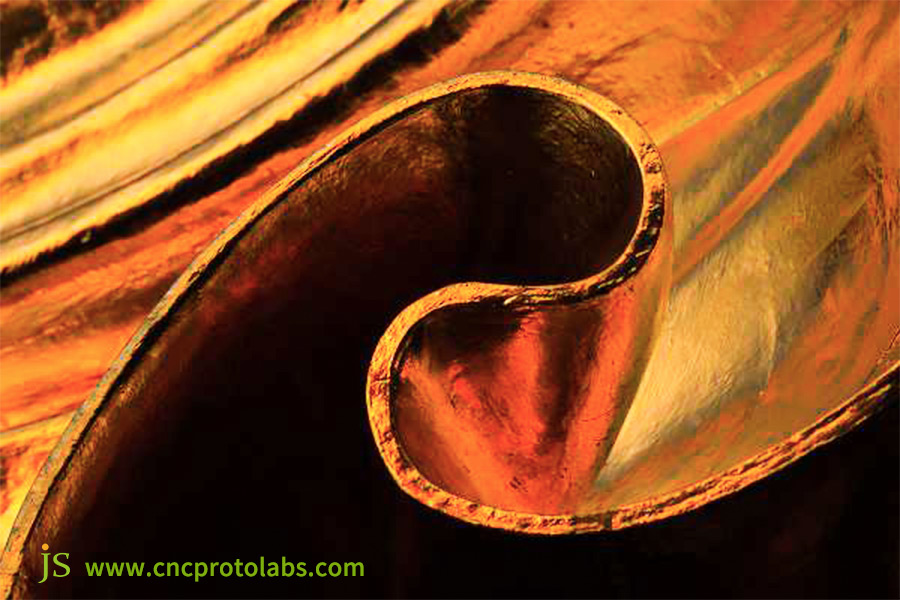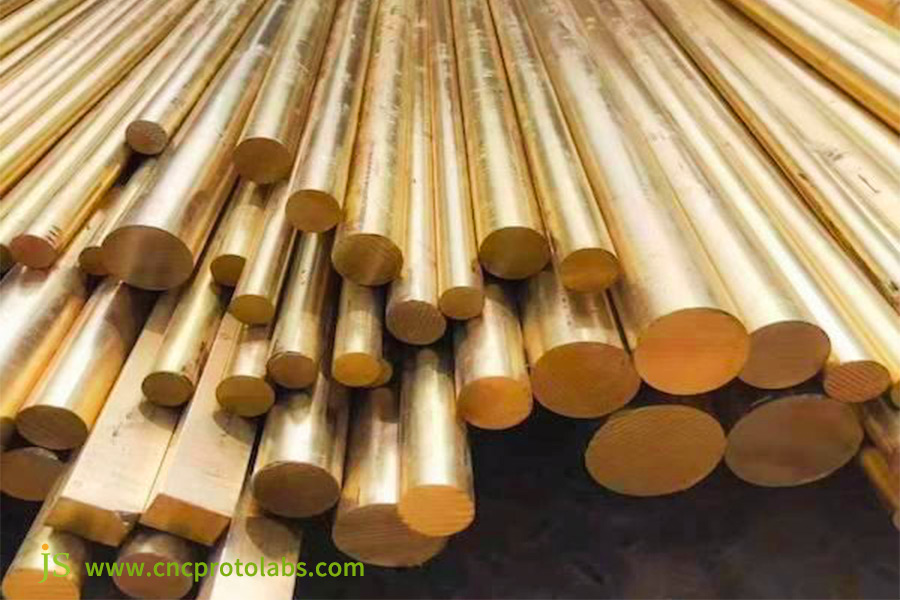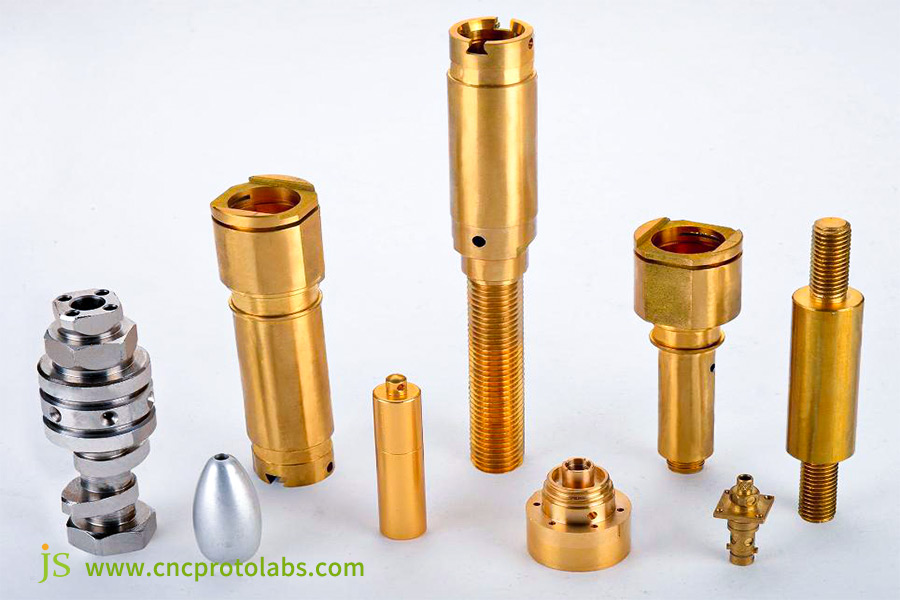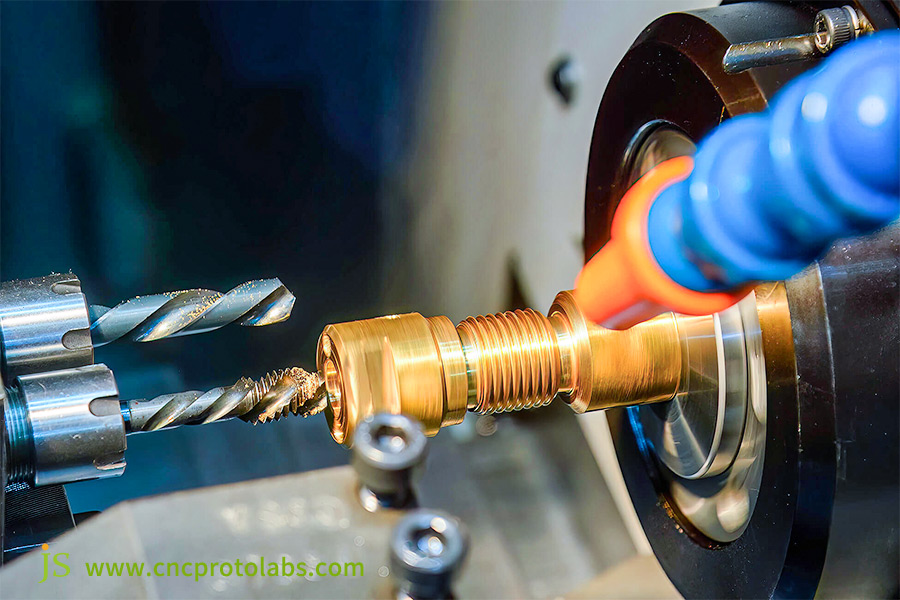Imagine that you turn on your high-end water heater to warm water for the day, and what you sense is a harsh, unfamiliar noise from the valve and a leak. When the brass parts in the factory that rely on CNC machining have poor material selection, production efficiency is low and costs continue to rise.
At this point, do you get confused about the secrets behind custom parts made from brass material? In fact, custom brass parts are widely used in industries, and grades of brass differ significantly in price and performance.
Through this book, there will be an open introduction to customized parts made of brass material, and you will have a comprehensive understanding of the key things about custom brass parts, from raw material selection to production, which will be a trustworthy reference for your project selection.
Core Answer Summary
| Comparison Dimensions | Free-cutting brass (e.g., C36000) | High-strength brass (e.g., H62) | Lead-free and environmentally friendly brass (e.g., C46400) |
| Core Features | Excellent machinability, highest productivity. | Excellent strength, hardness, and wear resistance. | Good seawater corrosion resistance, environmentally safe. |
| Cost Driver | High material cost, but extremely low machining cost. | Balanced material and machining costs. | Highest material cost, acceptable machinability. |
| Key Parameters | Lead content (~2.5-3.7%), providing lubrication. | High copper content (~62%), α+β phase structure. | Tin partial lead replacement, lead-free or low-lead. |
| Main Advantages | Fast machining speed, long tool life, and excellent surface finish. | Excellent comprehensive mechanical properties and high heat resistance. | Compliant with environmental regulations (e.g., RoHS), corrosion resistance. |
| Performance Disadvantages | Relatively low strength, unsuitable for high-force applications. | Machinability inferior to free-cutting brass. | High cost, with some reduction in machinability. |
| Typical Applications | High-precision gears, screws, valve cores, connectors. | Architectural hardware, wear-resistant parts, and hot stampings. | Ship accessories, drinking water equipment, medical equipment |
Why Are JS's Custom Brass Components More Reliable?
In the field of custom brass parts, reliability is a key concern for customers, and JS has an unparalleled advantage in this area, stemming from our extensive practical experience. Over the past decade, JS has provided custom brass parts services to over 500 companies worldwide, spanning a wide range of sectors, including home appliances, automotive, and medical devices.
For example, in the medical devices industry, brass valve cores that we produce for a medical devices company undergo a proprietary surface treatment process that gives them not only a much higher corrosion resistance but also a 30% increase in lifespan compared to the industry average.
In addition to that, we also possess technical personnel that is skillfully composed of over 20 seasoned engineers with over eight years of experience in research into brass material and CNC machining. We are capable of providing turnkey solutions ranging from the process optimization to the selection of materials, as tailored to specific clients.
This guide is a compilation of our expert experience with custom brass components for years, a summary of all the issues and solutions we have encountered in actual projects. Don't worry, it's professional-level and usable, providing you with good advice for your custom brass components projects.
With years of industry experience and a technical staff of professionals, JS can provide you with top-quality custom CNC machining manufacturing services. We shall do everything possible to meet your requirements.
Why Brass? The Allure Of A Material Beyond Conventional Materials
The principal reason brass is utilized in custom parts business is its popularity beyond conventional material and the ease of CNC machining. Here are its conventional strengths and unrivaled uses:
A Review of Classic Advantages
Process-Friendly: Suitable for CNC machining, forging, and stamping process, with good cutting performance, able to quickly process complex shapes (e.g., connectors with precise holes). Retains crack resistance and deformation resistance in machining, which reduces complexity and scrap rates.
Excellent Corrosion Resistance: Perform well in air, fresh water, and sea water and are thus perfectly suited for outdoor equipment and plumbing fittings. For example, brass outdoor light lanterns are resistant to corrosion even when they are subjected to rain and wind for extended durations of time.
Conductive Properties: Although less conductive than copper, it is suitable for applications in electronics and can be utilized as conductive connectors or heat sinks for reliable conduction of current and effective dissipation of heat.
Unreplaceable Uses
Plumbing Valves: Corrosion resistant and well sealed, they offer reliable operation under alternating hot and cold water conditions without leakage.
Electronic Connectors: With the use of CNC machining, metal parts of high precision and stable conductivity are possible that are compatible with electronic working requirements.
Decorative Uses: Special metallic shine and after polishing and electroplating, looks beautiful.And they are employed in door handles and decorative moldings that make houses both residential and hotel type more pleasing to eyes.
If you need custom parts machined out of brass material for plumbing, electrical, or other applications, JS's online CNC machining service is your answer. We can precisely meet the needs of many applications and produce good-quality parts for you.

Scientific Selection Of Grades Of Brass
The selection of an appropriate grade of brass is critical to part performance and cost control. Familiarity with the rules of nomenclature and effect of composition on performance is required.
Knowing the Rules of Naming
Every nation and region has its own standard terminology for grading brass names. Following is a list of some commonly used Chinese GB and American ASTM standards.
| Standard | Common Grade | Meaning |
| China GB Standard | H59 | 59% copper-41% zinc, ordinary brass. |
| China GB Standard | H62 | General brass with 62% copper and 38% zinc. |
| China GB Standard | HPb59-1 | Leaded brass with 59% copper, 1% lead, and residual zinc. |
| US ASTM Standard | C36000 | Leaded brass, excellent cutting performance, excellent for high-volume machining of parts (such as small valve cores). |
| US ASTM Standard | C26000 | General brass, excellent for forming and welding, excellent for stamping and bending (such as thin connectors). |
Composition Effects
Copper/Zinc Ratio: Copper >60% is in the α phase (tough and soft, can be cold worked). Copper 50%-60% is in the α+β phase (tough and strong, can be used for load bearing).
Role played by lead: It is a double-edged sword. It improves machinability (for example, HPb59-1 and C36000 are free-cutting brasses), but poses environmental and health risks. Lead-free brass is therefore called for in applications such as drinking water pipes and children's items.
The remaining elements: Tin provides seawater resistance (for valve components in marine work), and silicon provides wear resistance and strength (for mechanical bearings and gears).
JS fully understands the characteristics of various standard brass grades and is able to scientifically choose the right grade for your custom CNC machining manufacturing project. Simply provide us with your specifications, and we will develop a professional solution.

CNC Brass Part Manufacturing: From Digital Blueprint To Precision Solid
CNC manufacturing is necessary for the precise designing and production of brass parts. This includes rigorous control on programming tools, machining, and quality. Brass materials of different types have different machining characteristics.
Programming and Selection of Tools
Tooling recommended: Free-cutting brass (C36000, HPb59-1, etc.) should be machined through the use of high-speed steel or carbide tools. Lead-free brass is likely to develop built-up edge, thus TiAlN-coated carbide tools are recommended to obtain significant improvement in the surface quality.
Cutting Parameters to Apply: For free-cutting brass, 100-300 m/min cutting speed and 0.1-0.3 mm/r feed, for lead-free brass, 80-200 m/min speed and 0.08-0.2 mm/r feed. Adjustments are to be made depending on part accuracy requirements.
Machining Tips and Tricks
Leverage of free-cutting brass properties: Increased parameters improve metal removal rate, minimize machining time, and give smooth chip breakage and cleaning.
Lead-free brass machining safety measures: Use chipbreakers or modulate the parameters to enable chip breaking. Use water-soluble coolant to enable proper reduction of temperature and wear, ensuring machining precision.
Quality Assurance
Online Inspection: Real-time part dimension and shape monitoring allows real-time correction of machining defects.
First Article Inspection: Every batch is inspected thoroughly with a first piece inspection, and only approved pieces can be accepted for mass production to prevent batch rejection.
Critical Dimension Control: Check and examine continuously using SPC techniques to generate very consistent dimensions for each batch.
JS has extensive CNC machining expertise for brass components. We can select optimal tools and parameters for different brass materials and produce CNC machining parts with strict quality control. Contact us for custom projects.

The Hidden Driver Of Cost: Why Is "Easy Cutting" The Key To Saving Money?
In controlling the expense of custom brass parts, "easy cutting" brass plays an important factor. Careful assessment including material unit cost and machinability should be conducted in order to control CNC machining price:
Material Unit Cost
The expense varies by grades. Brass containing scarce elements (such as tin) is 10%-20% more expensive. Free-cutting brass (such as C36000) is $0.5-1 USD per pound more expensive than H62 since it's simple to machine and extremely sought in the market.
Machinability – A Cost Multiplier
Machining Speed: "Easy-to-cut" brass (such as C36000) is 30%-50% faster than conventional brass, enabling more parts to be machined in the same time frame, significantly reducing cycle time and unit cost.
Tool Life: Decreases tool wear, extending tool life by 20%-40%, reducing tool change frequency and downtime, and lowering tool buying costs.
Surface Finish: Surface roughness is realized at Ra1.6-Ra3.2 through machining, eliminating secondary polishing and keeping process steps and additional costs low.
Scrap Rate: Machining is reliable, with scrap rate being 5%-10% lower than that of regular brass, reducing material wastage and increasing utilization.
In general, free-cutting brass is a bit pricier per unit but can reduce overall machining cost by half. "Easy-cutting" is the key to cost control.
JS understands the importance of "easy-cutting" to cost and can select cost-efficient brass grades to well control CNC machining prices. For non-standard demand, you are welcome to order through sample request and quote procedure for cost-saving service.

Post-Processing: A Key Means Of Improving Brass Part Performance
After CNC machining, post-processing also can enhance brass part performance to meet different applications. General processes are as below:
Heat Treatment
Stress Relief Annealing: The brass parts after cold processing will generate internal stress. Heating them to 200-300°C, holding for 1-2 hours, and then cooling slowly can eliminate this stress completely, minimizing dimensional instability and preventing distortion in service.
Recrystallization Annealing: Parts become hardened and less plastic after being subjected to severe cold working. Heating them up to 400-500°C, followed by holding, and subsequently cooling allows grains to re-nucleate and develop, regaining plasticity for further forming.
Surface Treatment
Mechanical Treatment: Polishing can finish the part surface closely, both improving its finish and looks. Sandblasting utilizes high-speed abrasives to hit the surface, creating an even roughed surface for better coating adhesion.
Electrochemical Treatment: Nickel electroplating is used for corrosion resistance and can be used on extreme conditions such as humidity, acid, and alkaline. Gold electroplating is used for conductivity and oxidation resistance and can be used on high-precision parts such as electronic connectors.
Chemical Treatment: Passivation produces a thick passivation layer on the part's surface, inhibiting chemical reaction and corrosion. Phosphating forms a phosphate coating, enhancing adsorption and lubrication, with simpler process following and assembly, which is faster.
Customization Overcoming Challenges: Analysis Of Typical Problems And Solutions
Brass part customization is oftentimes beset most commonly by material choice, design and production, environmental regulations, and controlling cost. These issues require targeted solutions to propel custom CNC machining manufacturing.
Material Selection Mistakes
Challenge: Only taking into account the price of the material without regard to performance compatibility. For instance, employing H59 in pressure-bearing valve for high-pressure applications, with potential for easy deformation and leakage.
Solution: Determine material based on part application condition (e.g., pressure, temperature) and performance needs. If uncertain, consult JS, who will suggest a proper brass material.
Disconnection Between Design and Manufacturing
Challenge: Designs are not CNC machinability-aware. For instance, narrow and deep grooves are beyond the range of the tool's machinability, resulting in hard-to-machine and excessive scrap.
Solution: Pre-plan and direct manufacturing and design groups, or choose JS's integrated design and manufacturing services, to optimize solutions that satisfy application specifications and machinability.
Environmental Regulations
Challenge: Choosing high-lead brass due to insufficient knowledge of regulations can lead to return product and fine if it is not compliant with the EU RoHS Directive.
Solution: Monitor regulatory data in various nations and lead-free brass be your priority number one. JS provides compliant brass material and CNC machining parts to make market entry successful.
Mistakes in Cost Control
Challenge: Reducing the material cost as the sole priority and selecting poorly machinable brass may result in slow processing, tool wear, and high scrap, raising overall expense in the long term.
Solution: Calculate material, processing, and tool costs very highly and choose high-speed brass (for example, C36000) to keep total cost low. JS can perform total cost analysis and recommend the cheapest approach.
Case Study: The Price Of "Silence" - Optimizing Material Selection For A High-End Water Heater Valve
This case study on the premium water heater valve clearly demonstrates the impact of brass grade on performance and price and demonstrates the role of JS Precision.
Customer Background and Pain Points
Once it brought a new product to market, there was leakage and abnormal noise from the valves about three months after usage. The complaint rate of customers was more than 15% and affected both customer experience and brand image. The company needed to solve the problem urgently.
JS's Solution
After disassembly and examination, JS technical personnel discovered that the original brass valve core H59 had been bent plastically and worn out due to alternating hot and cold water flow and pressure shock. The solution is as follows:
1.Material Upgrade:
The material for the valve core was to be upgraded with HPb59-1 (free-cutting brass).
HPb59-1 brass possesses good strength and hardness, which can withstand alternating hot and cold water cycles and pressure shocks and is less likely to undergo plastic deformation and wear. Its satisfactory machinability also makes CNC machining simple, and the dimensional accuracy and surface quality of the valve core are maintainable.
2.Process Improvement:
Add a stress relief annealing process after CNC machining. Stress relief annealing eliminates the residual stresses that are induced during machining, improving the dimensional stability of the valve core and preventing deformation due to stress release at working conditions.
3.Surface Treatment:
Critical sealing surfaces are precision-polished to reduce surface roughness and improve sealing. Precision-polished sealing surfaces provide a tighter fit between other components, reducing leakage and friction noise.
Final Outcomes
The new valve fixed leakage and noise issues, reduced customer complaint levels to below 0.5%, enhanced product yield from 85% to over 98%, and significantly improved customer satisfaction. Although the cost of each valve core increased by approximately $2, overall savings were significant as brand reputation was restored and around $500,000 of annual after-sales costs were avoided.
How To Start Your Brass Part Customization Project?
If you need custom brass parts, follow these four steps to rightly obtain CNC machining parts that meet your specifications:
Step 1: Define Your Needs
Determine the application of the part (e.g., home appliance, car), performance requirements (e.g., strength, corrosion), dimensions tolerance (e.g., ±0.01mm), surface finish, and batch size to allow the service provider to provide an exact solution.
Step 2: Provide Clear Drawings
Provide 2D or 3D drawings with dimensions, tolerances, material grade, and surface treatment requirements to ensure the accuracy of CNC machining parts. In case you don't have design capabilities, kindly contact JS, and our engineers will assist in producing professional drawings.
Step 3: Consult a Professional Partner
Select a professional service firm and understand their technical competence, equipment accuracy (e.g., ±0.005mm precision on CNC machines), lead time, and quality control level. JS has long years of experience in the custom CNC machining manufacturing industry and can provide end-to-end consultancy and solutions.
Step 4: Request Samples and Quotes
Upon confirmation of your interest in working together, request samples and physical testing to ascertain quality and accuracy. You shall receive a quote with material, machining, and surface treatment costs. JS sample turnaround is 3-7 days, and within 24 hours a response to quote will be given. Upon confirmation, mass production can then continue.
FAQs
Q1: Which is more expensive, C36000 or H62?
C36000 is usually more in terms of unit material cost, approximately $0.80-$1.20 per pound more than H62. However, C36000 is free-cutting brass with better cutting properties, increasing CNC machining speed, tool longevity, and reducing scrap, potentially lowering the cost of machining in total. The specific choice will depend upon the complexity of the part.
Q2: Does lead-free brass compromise performance?
Strength and machinability-based, early lead-free brass did lack. But with technology improvement, newer environmentally friendly brasses (such as bismuth and silicon-based brasses) have arrived with performance capabilities virtually at par with traditional leaded brass, meeting the need of most custom CNC machining manufacturing processes while keeping environmental control in place.
Q3: What is the minimum hole diameter and detail that can be machined on brass parts?
This will depend on the machining method and tool size. Using CNC drilling with a micro drill, the minimum hole diameter to be machined can be 0.15 mm, with CNC milling, grooves of 0.2 mm wide can be machined. However, the specific requirements also differ depending on the part material and that of the machining equipment. JS can machine to high precision as per your specifications.
Q4: What are the key cost and performance distinctions between brass and bronze?
In terms of cost, brass is less expensive per pound, $2-3 cheaper per pound than bronze. And brass has good cutting performance, and the cost of CNC machining is also lower. In terms of performance, brass offers excellent corrosion resistance and conductivity, thus suitable for plumbing and electronic devices. Bronze offers good strength and wear resistance, thus most suitable for high-stress applications such as gears and bearings.
Summary
The brass universe is far more complex and interesting than you might realize. A fairly minor grade difference conceals decades of experience in materials science. It not only determines the performance capability of components in custom CNC machining manufacturing, but also silently influences cost. Choice of materials shouldn't be a blind spot in your projects.
JS always guides you with professionalism, from the scientific selection of brass materials to precise control of CNC machining, to guarantee stable brass custom parts in each process. If you want to customize brass parts,please choose our online CNC machining services to start your customization project.We will return your trust with superior products and services.
Disclaimer
The contents of this page are for informational purposes only.JS Precision Services,there are no representations or warranties, express or implied, as to the accuracy, completeness or validity of the information. It should not be inferred that a third-party supplier or manufacturer will provide performance parameters, geometric tolerances, specific design characteristics, material quality and type or workmanship through the JS Precision Network. It's the buyer's responsibility Require parts quotation Identify specific requirements for these sections.Please contact us for more information.
JS Precision Team
JS Precision is an industry-leading company, focus on custom manufacturing solutions. We have over 20 years of experience with over 5,000 customers, and we focus on high precisionCNC machining,Sheet metal manufacturing,3D printing,Injection molding,Metal stamping,and other one-stop manufacturing services.
Our factory is equipped with over 100 state-of-the-art 5-axis machining centers, ISO 9001:2015 certified. We provide fast, efficient and high-quality manufacturing solutions to customers in more than 150 countries around the world. Whether it is small volume production or large-scale customization, we can meet your needs with the fastest delivery within 24 hours. Choose JS Precision this means selection efficiency, quality and professionalism.
To learn more, visit our website:www.cncprotolabs.com







